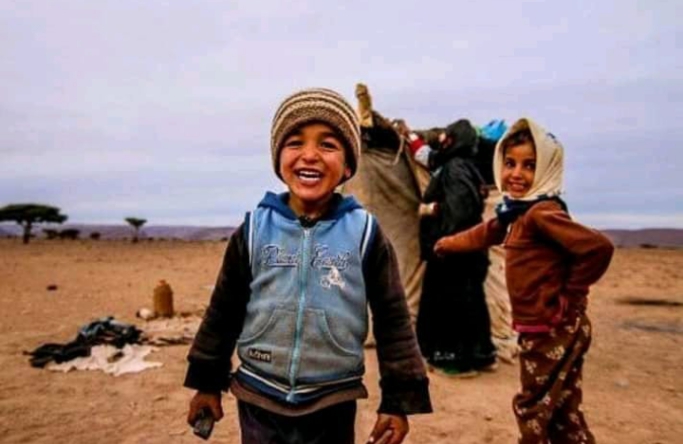the Who are the Berber people of Morocco,You will undoubtedly come across the Berbers, one of Morocco’s most distinctive ethnic groups when traveling there. They have a reason to be proud of their contributions to Morocco’s development because they are the country’s original residents. The Berbers are one of the last holdouts of tradition in a rapidly modernizing nation due to their distinctive language and culture; even the oldest villagers now joyfully speak on mobile phones, but they do it in a language that is virtually unreadable to outsiders.
Morocco Berber History
The history of the Berbers dates back to the Stone Age. In fact, the earliest Homo Sapiens ever discovered, dating back approximately 300,000 years, was discovered in Morocco. This indicates that the native inhabitants of Morocco have lived here for a substantial amount of time. Archeological records have provided us with a lot of information about the first inhabitants of Morocco. The history of the Berbers itself is mostly oral. In fact, calling them “Berber” at all is probably incorrect!
The Berbers proudly refer to themselves as the “free people,” the Amazigh. The word “Berber,” which comes from the Greek word barbarian, is derived from “Barbary.” Although “Berber” is often used across Morocco, both by Amazigh people and other Moroccans, it is certainly not the most flattering or accurate term. On the other hand, if you are ever referred to as an alumni, you are being referred to as a foreigner or, more specifically, a Roman.
The Amazigh governed all of North Africa thousands of years ago, mostly through several tribes. For commerce and travel, they would zigzag over the Sahara and the southern Mediterranean basin. They have been referred to by a variety of names throughout time: They were referred to as “Libyans” by the ancient Greeks, “Numidians,” and “Africans” by the Romans, and “Moors” by the majority of medieval Europe when referring to this group of North African tribes. In actuality, the Arabic name Al-Barbar originated with the Berbers. Most likely, the word “barbar” was modified from its original ancient Greek form. According to the Arab historian Ibn Khaldun, there is some speculation that an old woman named “Barbar,” who appears in some writings as a mother named “Barbara,” may have given the name to the tribes, maybe in the Somali region.
By peacefully converting the Awraba tribe to Islam, Moulay Idriss, the father of modern Morocco, established the Idrissid Dynasty after fleeing the Abbasid Dynasty. Before then, the majority of Berbers in all of North Africa were Muslims, Christians, or Jews. Islam, however slightly different from what was practiced in the Middle East, swiftly spread throughout the area. The Almoravids and Almohads, two of the largest historical Moroccan dynasties, reigned over a sizable portion of Spain and northwest Africa.
The Phoenicians, Carthaginians, Romans, Arabs, Spanish, and French have all interacted with the Amazigh through conflict, commerce, negotiations, and hosting over the years. Despite attempts to colonize them by the Romans and others, the Berber people have managed to maintain their own language and culture, and in truth, they have never been subdued.
Although they have had their own writing system for at least 2,500 years, Berber language is predominantly spoken. The earliest texts, which might be challenging to locate, can be found indexed in the local museums all across the south.
The language has more recently been formally codified and is now one of Morocco’s two official languages, along with traditional Arabic.
Morocco Berbers Today
the Who are the Berber people of Morocco Although about 80% of the population of 32 million Moroccans claim. at least some Berber background, most estimates place the country’s Berber population at approximately 40%. Other countries with smaller Berber populations include Mali, Mauritania, Algeria, and Tunisia. The majority of Morocco’s 36 million people are probably a mix of Berber and Arab nowadays. Almost wherever you go, you’ll find “Berber Pride” stickers, graffiti, t-shirts, and caps, since many Moroccans are extremely proud of their ethnicity and ancestry. The state overturned the restriction on Amazigh names in 2014, acknowledging this pride on a state level.
It was once believed that the nation was approximately split, with the Arabs controlling the towns and lowlands and the Berbers residing mostly in Morocco’s High Atlas, Middle Atlas, and Rif mountain ranges. However, this separation is less evident now. While identities are more flexible in the metropolis, Moroccans who live in the highlands tend to identify more as “Amazigh.”
Some Occidental stereotypes about Berbers portray them as mostly nomadic people who travel through the Sahara Desert on camels. Even if it applied to some tribes alone, this stigma applied to the whole Berber world. It should be noted that Amazigh have a long history of developing trade routes between. West Africa and Sub-Saharan Africa, which have a significant impact on business.
They delivered products to the northern Moroccan cities, especially Fez and Marrakesh, from beyond the Sahara desert. However, the majority of Berbers in Morocco were farmers who resided in the lowlands and highlands. Others were business owners and traders. Farmers were once thought to be lower class than merchants, although this has changed through time.
The tribes of the Morocco Berbers
the Who are the Berber people of Morocco Although they share a shared identity, the three main tribes of Berbers in Morocco may be distinguished. Even though Tamazight is the name given to the majority of Berbers’ native tongue, it is not a uniform tongue. The languages of the many tribes in the nation are essentially incomprehensible, and one Berber may not comprehend a fellow Berber just a few hours down the road.
The Riffian Berbers speak a dialect known as Tarafit in the north. The Ghomara live in the Moroccan Rif area. The Rif Mountains are the only place where this particular Berber community, which is the smallest in the nation, can be found.
The Zayanes live in the Middle Atlas and are found from Fes in the north to Marrakesh in the south. Although the Tamazight dialect of this people varies greatly from place to region, native speakers can typically understand it. Some Zayanes are still nomads who move with their animals when the seasons change, especially those in the southern region close to Ouarzazate.
The Shilhah live in the southern Atlas and Anti Atlas Mountains. The Shilhah are the largest Berber tribe in the nation. and Tashlheit, said to be the most “pure” form of Berber, is spoken by them. Tashlheit is the primary language used in most Berber movies and music. The Draa Valley is home to the Drawa Berbers. The Mesgita, Seddrat, and Zeri tribes dwell near the North West’s rivers, while the Dades are in the North East.
Food and Flavors of the Berbers
Book a Morocco trip with a local travel agency. and be sure to spend some time trekking in the Atlas highlands, if you want to learn more about the Berbers of Morocco. Just two possibilities are riding camels in the Sahara or visiting the palm-lined oasis of the Draa Valley.
Visit the many villages you pass along the road, and make a quick pit stop if you notice a sign for medfouna (med-foon-aa), commonly known as Berber pizza.
In reference to how the bread is customarily prepared, which involves burying it in Saharan sand, the name “medfouna” means “buried.”The Berber people are known for their hospitality and will frequently offer to make you a typical Moroccan meal, always with fresh bread (aghroum) from the oven, for supper.
Berber Craftsmen and Artists
A visit at a carpet market may (and should) be included if you are interested in handcrafted crafts, and your Moroccan tour guide will assist you decide which path is ideal for you. Many examples of Berber artistry may be seen in the markets of Marrakesh or Fez. You will find a variety of items, including exquisite silver jewelry produced by Tuareg and Amazigh artisans and handcrafted babouches or belgas manufactured in the workshops. Numerous crafts include woven or painted Berber designs and patterns, which are unique and sometimes bright. The culture is strongly woven into the textiles and carpets, from the sequined bridal blankets (handira) to the woolen black and white Beni Ourain carpets.
However, it should be noted that buying fair trade goods when shopping in Morocco is beneficial for the locals and the economy.


Leave a Reply